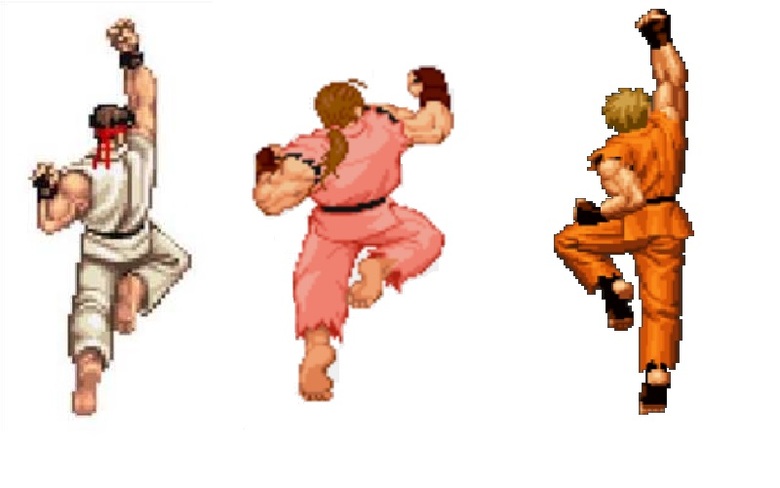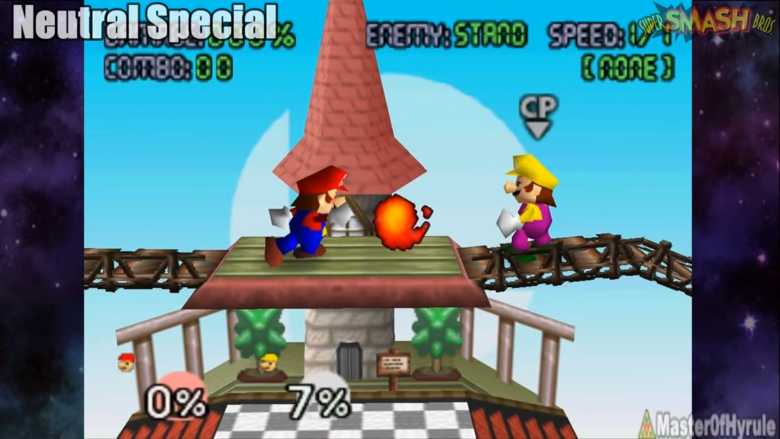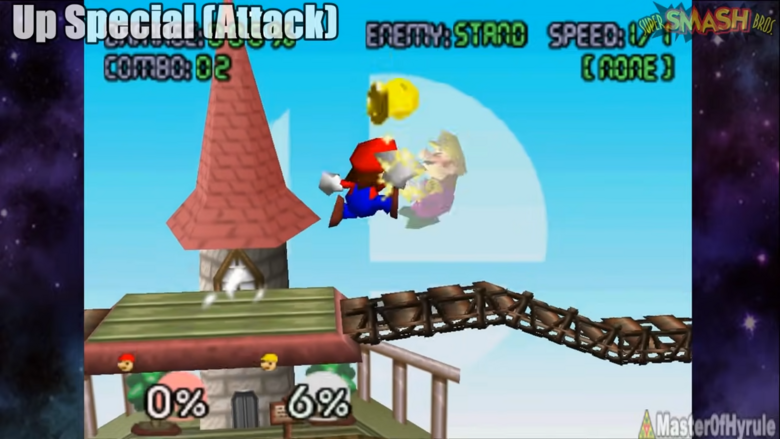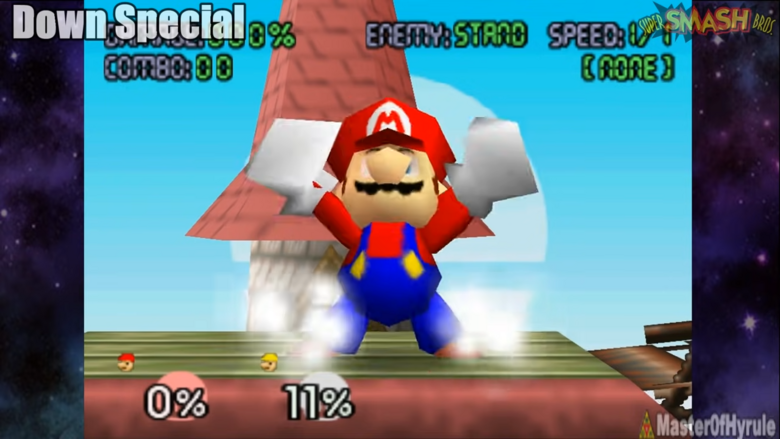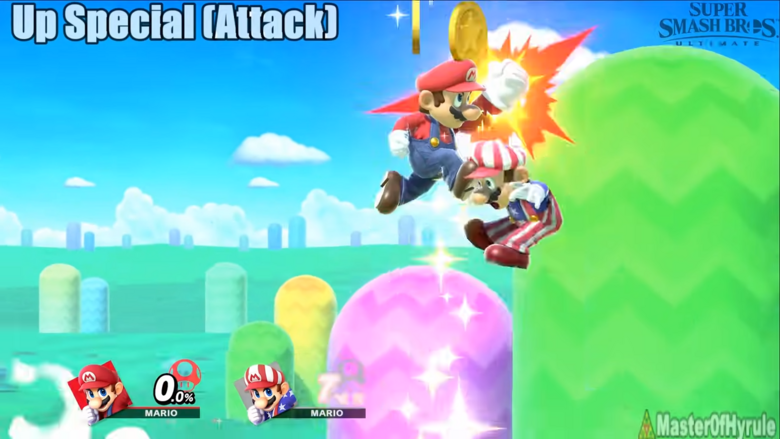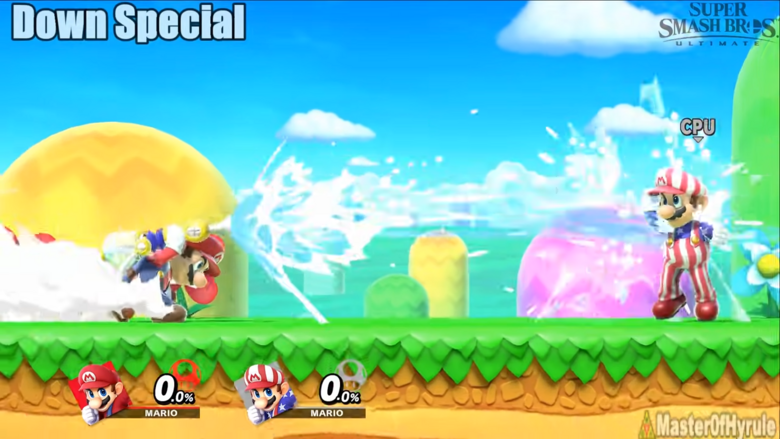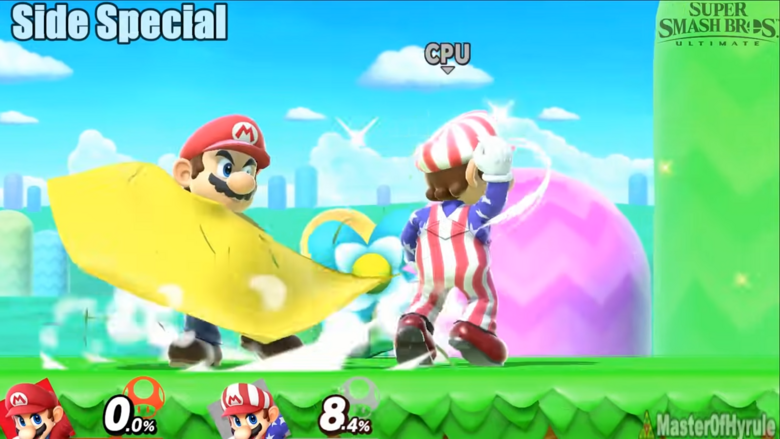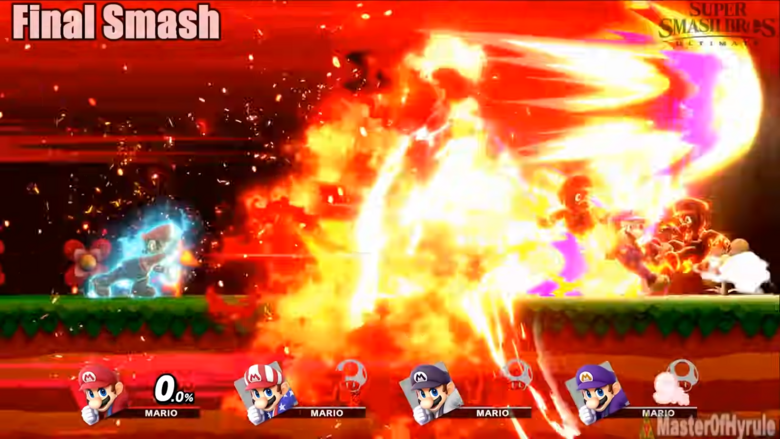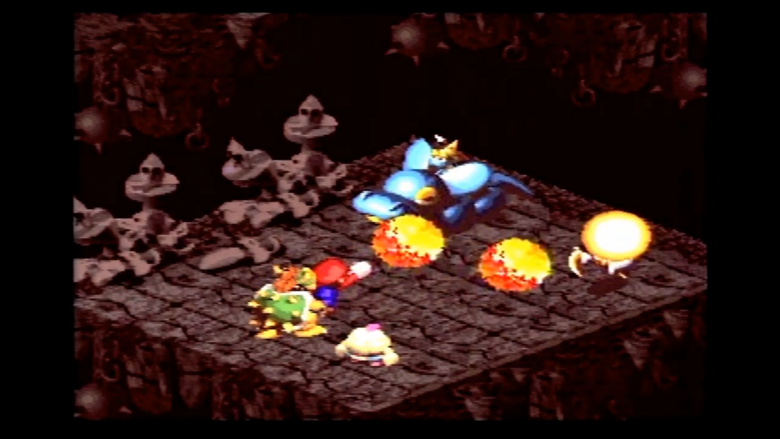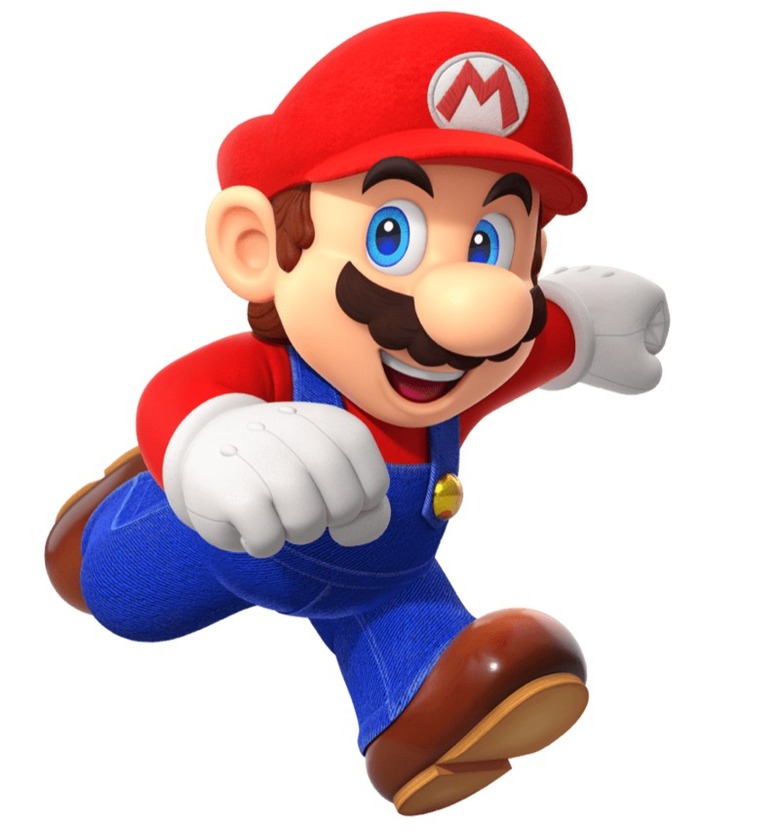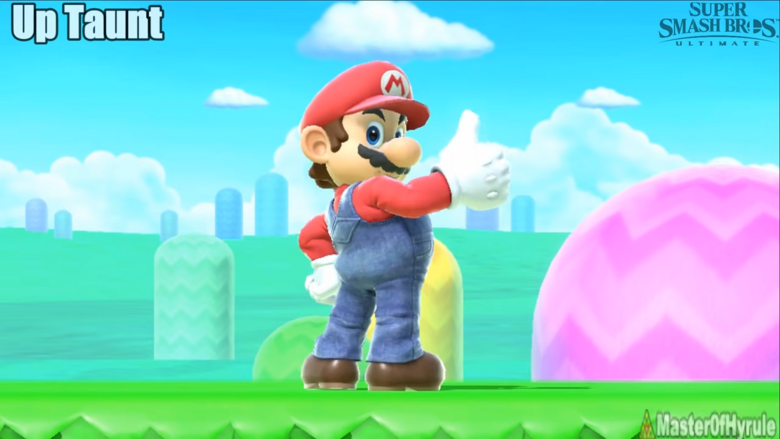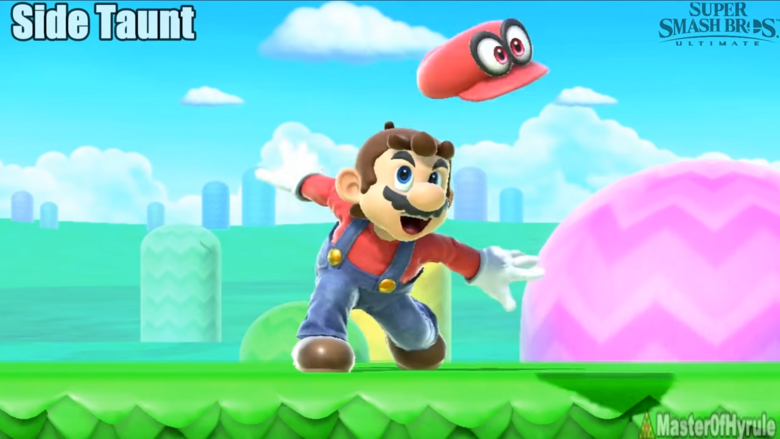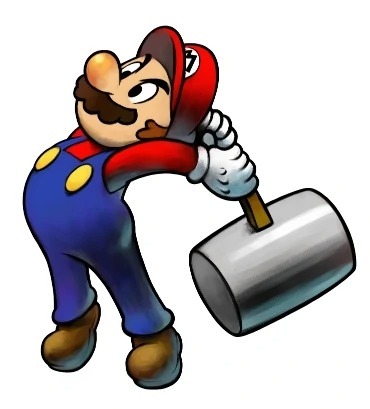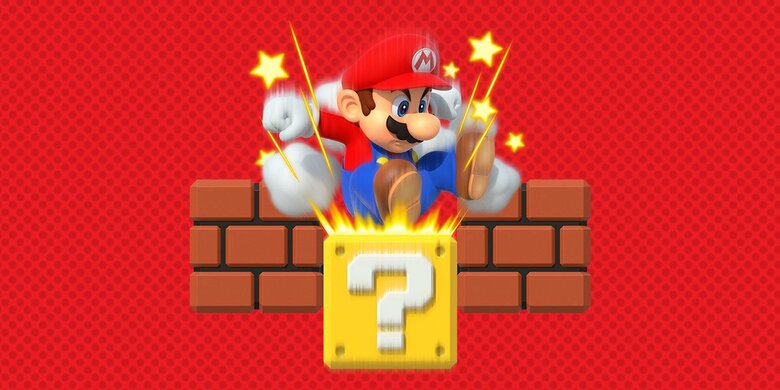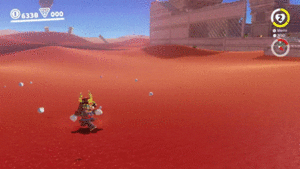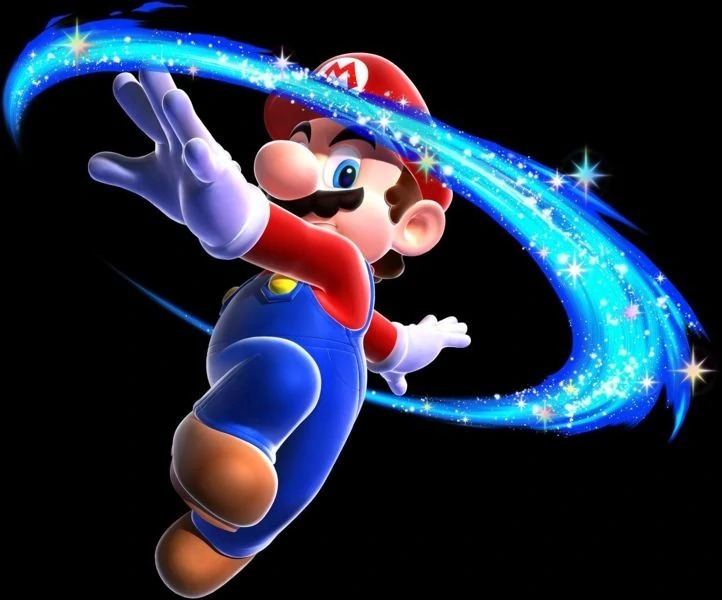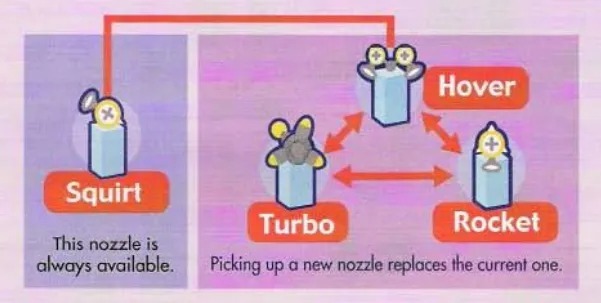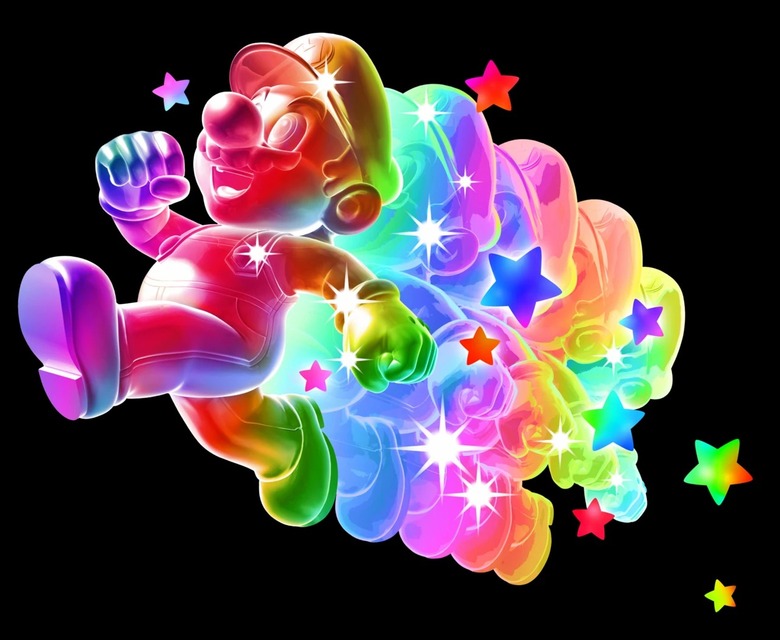Super Smash Character Reviews: Mario
Super Smash Bros. Ultimate’s roster has been complete for a while now and it’s very likely we’re still years away from seeing what the future holds for the Smash series. If/when the series does return, it’s likely that it won’t have the massive amount of content that Smash Ultimate has.
True to its name, Smash Ultimate has the most content of any Smash Bros. game, featuring the return of every past character and most stages as well. With so much of the series’ history in one place, it gives us the perfect opportunity to reflect on what the series has been and what it could be.
Consider this series of features as a review of each character in Smash Bros. Ultimate, rather than a review of the game itself. We’ll be taking a look at each character to see how well their Smash Bros. appearance represents the character as a whole, and we’re kicking things off with Mr. Videogame himself, Mario “Jumpman” Mario!
The Rules
So…how do we go about grading these characters? The system I came up with is pretty simple, as it breaks things down into 5 categories: Neutral Attacks, Special Attacks, Uniqueness, Aesthetics, and Design.
In each category, the character will receive a score of 1-10 based on their move set and design. I’ll tally up the scores at the end to see if the roster appearance is a good representation of the character in general.
I know some people don’t care for numbered scores, but this meant to be a straightforward way to gauge a character’s qualities, and not as a review critique. I urge readers to not take the scores too seriously, as some of these factors will be hard to quantify with certain characters.
Here’s a bit more detail on each of the 5 categories:
Neutral Attacks: This is basically all of the fighter’s non-special attacks (Smashes, aerials, throws, ext.). Considering that Smash is first and foremost a fighting game, I felt it was necessary to double up on the categories that discuss the character’s attacks.
Special Attacks: All of the fighters B-button special moves (including the Final Smash!); the moves that help them stand out from the rest of the cast. This category considers not only how the moves work, but how they come together to sell the character’s design.
Uniqueness: How does the character feel compared to other characters on the roster? This category considers things like gimmicks and similarities to see if the fighter could’ve been done more justice.
Aesthetics: This category covers things like alternate colors/costumes, sound effects, and animations. Does the fighter look, sound, and act like the character they are representing?
Design: Does the character’s gameplay style reflect their original series? Masahiro Sakurai once said that when making character’s movesets, he sees the characters fighting in his head like a dance. This category asks if these “dances” are true to their original character.
Finally, this is an analysis of the characters from a representation standpoint alone. The character’s competitive viability will not be considered in their score.
Neutral Attacks
Ever since the original Super Smash Bros. on Nintendo 64, Mario’s neutrals have been taken from and inspired by his debut 3D title, Super Mario 64.
These are the only clear-cut references in Mario’s neutral attacks. While I know that some people view his flame-fisted Forward Smash as a nod to the firebrand from Mario and Luigi: Superstar Saga, the move was introduced in Melee two years before Mario and Luigi hit store shelves.
This leads to pretty much every other move being an original punching/kicking attack that derives inspiration from the same moves in Super Mario 64. I’ve heard some lament this fact, wishing that Mario had moves where he’d use his power-ups like the Tanooki tail and Cat claws for his normal attacks, but I personally disagree.
Mario’s role in Smash Bros. is to teach newcomers the basics of the game through a simple to understand moveset. This is very likely the reason why he’s the character always used in the “How to Play” movie.
A moveset where Mario dons certain power-ups for one or two normal moves would make him feel complex and messy. That approach works for a more wacky character like Mr. Game and Watch, but not the first name on the roster. Of course, this begs the question as to why Mario was given this role.
As you may know, some of the early Smash characters designs aligned with certain fighting game archetypes, rather than being representations of their namesake. This would certainly explain Mario’s role, which matches up nicely with the Shoto.
Shoto (derived from Shotokan) is a term used by fighting-game players to describe an all-around type of moveset. You can see this design approach on display in characters like Ryu and Ken from Street Fighter.
There is a lot of nuance to this topic, and if you want a more in depth explanation of what a Shoto is from someone who knows way more about fighting games than me, I highly suggest Maximillian Dood’s video on the topic.
We’ll talk more on how Mario’s moveset fits into the Shoto archetype when we get into his special attacks, but for now it’s important to know that Shotos are typically the “face” characters of the fighting game. They are meant to teach the player the fundamentals, and that fits Mario to a T!
Even outside of Smash Bros., Mario is generally made to be a well-rounded character in all of his multiplayer appearances. Mario is classified as an all-around character in Super Mario Bros. 2 (US), Super Mario 3D World, the Mario and Sonic series, and the Mario Kart series. Mario is meant to be an approachable character that new players (particularly kids) can gravitate to.
That said, I do think Mario’s normal attacks could use some spice. There are plenty of classic Mario moves that get no representation at all in his moveset, such as the ground pound, super jump, and stomp. I also wish his side smash and up smash were a more clear reference like the down smash is. The smash attacks are important moves, so I feel they should have clear sources of inspiration.
While it could stand to have some more Mario love, his normal attacks are the fundamentals that will help people get into the game. This is a role Mario has played since the beginning, and it makes perfect sense here.
Score: 8/10
Special Attacks
As stated earlier, there’s a lot that goes into the classification of a Shoto. Fighting game players have generally agreed that Shotos have a fire-ball projectile, an uppercut, and a spinning kick attack. All three of these appeared as Mario’s specials in the original Super Smash Bros. on Nintendo 64.
This, of course, doesn’t reflect Mario in Super Smash Bros. (side specials weren’t even a thing back then!) but it does help show how Mario was seen as the game’s basic fighter from the start.
What have future games done for Mario’s specials? Let’s take a deep dive on that topic.
Mario’s specials are interesting, with the fireball and super jump punch coming off as solid moves and reference, but the other two specials feel a tad odd.
Giving Mario F.L.U.D.D. for Brawl made sense at the time, but since then, it feels like quite a random move. F.LU.D.D. also feels like a strange choice to include on a tutorial character, though I suppose you could make the argument it teaches players about charged moves, along with the fact that not every attack needs to damage the enemy.
I’m pretty much in an “all or nothing” mentality with F.L.U.D.D.; either give it more things to do or replace it with something else.
While I generally like the idea of F.L.U.D.D., I can’t say the same for Mario’s cape. Don’t get me wrong…I LOVE its inspiration, which is the cape feather from Super Mario World. Strangely, the cape in Smash just reflects projectiles and slightly slows your descent. Yes, these are things the cape could do in Super Mario World, but it’s main feature isn’t represented in Smash Bros. Ultimate at all.
To me, having the Super Mario World cape without crazy gliding is like having the Hammer Bros. suit without the ability to throw hammers. What’s the point even? I just can’t agree with giving one of Mario’s specials to an item that’s only had one major appearance, and still feels underutilized in its Smash implementation.
At least these moves are all derived from something in Mario games, which is more than I can say for his Final Smash…
The Mario Finale is certainly…something
While I’ve spoken pretty positively on Mario being Smash’s Shoto, I feel the Mario Final Smash exemplifies why playing that role is a double edged sword.
With Mario being the simple fighter, it stands to reason that his Final Smash should also be straightforward. Unfortunately, in doing so, Mario is robbed of one of his most important attributes: character.
There are so many power-ups and moments in Mario games that would be a fitting Final Smash, yet somehow this was what they went with in Brawl. Even worse, this Final Smash has remained the same all the way through to Smash Ultimate.
I’ve heard some people think this Final Smash might be a reference to Mario’s “Ultra Flame” attack in Super Mario RPG, but in my opinion, that seems to be too much of a stretch. If Super Mario RPG inspired anything in Smash, it’s probably the idea of Mario not needing to be Fire Mario to use fire attacks. Unless I’m mistaken, it was Super Mario RPG that showed us the very first instance of that being possible.
All in all, Mario’s specials are a mixed bag. While some are solid references that also stay true to Mario’s simple gameplay style, others are odd picks that are debatably complex for a character of his type.
Score: 5/10
Uniqueness
Uniqueness is a weird thing to judge Mario on.
Mario isn’t really a unique character in Smash’s roster, but that’s supposed to be the point. It feels weird to judge a tutorial character on how much they stand out from the other fighters, but I still felt this was a necessary category to include overall.
While Mario could stand to be more unique, it would go against his character design to stand out. This pretty much means he’s fine with where he is.
Score: 7/10
Aesthetics
Speaking of the ways Mario loses some of his personality in Smash…
I feel this comes from, again, Mario being the game’s Shoto. Mario in Smash acts more similar to Ryu from Street Fighter than the Mario we know and love. This isn’t to say that Mario shouldn’t act a little bit serious, as we’ve seen him adjust his demeanor when the situation demands. That said, no matter how seriously Mario is taking a current situation, he still finds ways to shout “Wahoo!” in the heat of the moment.
Speaking of shouting, I feel this more serious direction for Mario even impacted how Charles Martinet voiced the character. Take a listen below to hear what I mean.
Martinet’s performance in Smash doesn’t have the same oomph we usually get from Mario. Comparing how Mario acts in this game to other characters like King Dedede or Banjo, it makes you really wish Martinet was allow to be play things a bit lighter. To its credit, Smash Bros. Ultimate does take a bit lighter approach to Mario.
One thing Mario doesn’t disappoint on is his costumes! While there are some glaring omissions (Fire/Ice Flower), we get a wide range of options, running from the well-known to the obscure.
A wide range of Mario history is represented here! From Classics like NES Golf and Foreman Spike of Wrecking Crew (2nd and 4th respectively) to modern classics like the Mario Maker and Odyssey Wedding outfits!
Hopefully as Smash continues, we can find a nice balance between Mario’s personality and utility.
Score: 7/10
Design
How does all this come together for Mario? We’ve talked a lot about how Mario’s moves being basic makes sense for his character in the context of a fighting game, but we’ve also discussed some setbacks.
Mario’s games are vibrant and wacky, and that is something that Mario’s Smash moveset is lacking. Taking things too far would then strip Mario of his simple role, but I think it’s possible to have a bit more fun without going overboard.
Mario’s role of being an ‘everyman’ is encapsulated pretty well in Super Smash Bros., but there’s still room for personality traits that would make him feel more like himself.
Score: 7/10
Final Score
Mario’s final score is 34/50 or 68%.
Again, don’t think of these scores as the be-all/end-all, but more so an indicator of how well the character’s design holds up. The score shows how well some things have been realized, as well as the potential for sprucing things up.
Mario has a solid base behind his Smash appearance, but some applications of the concept could use improvement.
Improvements?
First up, I think Nintendo should get Charles Martinet re-record lines for Mario in Smash, as they’re still using the recording from Smash Bros. Brawl. It may seem like a small thing, but I believe it could go a long way in making Mario feel more genuine.
On a much lower level of importance is the Fire Flower costume, which would lovely to see return.
As for Mario’s actual moves, I do have some suggestions.
Closing Thoughts
This feature was an experiment, and I’m more than willing to return for future installments if people enjoyed this piece. Were there aspects that we forgot to consider? Is there a character you want to see tackled next? Whatever your thoughts, hit us up in the comments below.


